How to Choose a Seat on a PlaneWhat used to be a simple part of purchasing an airline ticket has become a hot mess in recent years. Should you pay for more legroom? Should you pay at…
BySam Kemmis•
This story originally appeared onNerdWallet

What used to be a simple part of purchasing an airline ticket has become a hot mess in recent years. Should you pay for more legroom? Should you pay at all? Do you have to select a seat in order to get on the plane? These are legitimate questions, and airlines do little to help answer them during checkout.
这里我们提供简单、直观的指导how to choose airlines seats, or how to skip seat selection altogether. Airlines have different rules and costs associated with seat selection yet all share many similarities. Mastering this basic yet important aspect of flying can make your trip more comfortable and save you a surprising amount of money.
The big exception here is Southwest Airlines, whichdoesn't follow the industry's seat selection conventions.
4 steps to selecting seats on planes
Step 1: Pick an airline with lower seat selection fees
Let's take a step back: Yes, many airlines now charge a fee to select seats ahead of time. This is a relatively new reality in the travel world and isn't consistent from airline to airline or even trip to trip. Therefore, it's good to know which airlines are saddling customers with sky-high fees and which are keeping them modest, or skipping them altogether.
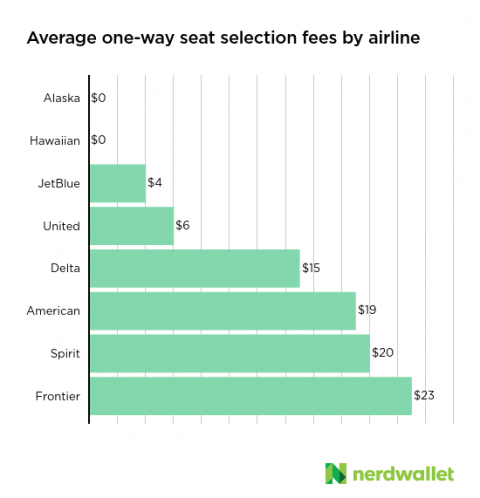
We determined these seat selection fees by looking across several fares and averaging the cost of choosing a window seat near the front of the plane and choosing a middle seat near the back.
- Airlines like American Airlines, Spirit Airlines and Frontier Airlines charged high fees for both window seats near the front of the plane and middle seats near the back.
- Delta Air Lines and United Airlines only charged for the nicer seats.
- Alaska Airlines and Hawaiian Airlines charged nothing at all.
So you can save yourself some hassle by choosing an airline with more reasonable rules and fees. You don't want to end up on the fifth checkout screen and realize that you owe $40 extra for your seat.
Step 2: Skip seat selection if you have to pay
Here's the tricky underside of seat selection fees: You usually don't have to pay them, but airlines really want you to. This gets especially confusing with basic economy fares,which differ from airline to airlineand often don't include free seat selection. But no matter what, you should skip seat selection altogether if the airline is trying to make you pay.
Here's an example. When trying to book a United basic economy fare, you might see that every available seat carries a charge, even the really lousy ones in the back.
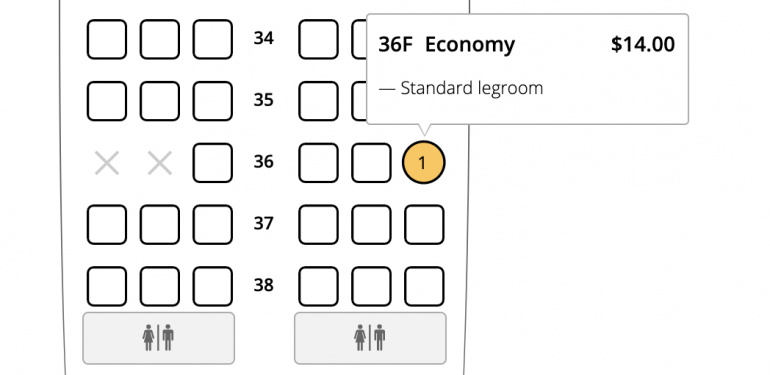
You might think you have to shell out $14 extra on this flight, but not so: You can skip the seat selection process altogether and save that money.
Does skipping seat selection mean you might not get a seat at all? Emphatically, no. You will likely get assigned a seat during check-in (though you should still skip it if the airline tries to tack on a fee) or, at the very least, at the gate.
Again: You don't have to select a seat in order to get a seat. You just might get stuck with a suboptimal one if you choose to skip it. It is important to note that if you're traveling with others, there is no guarantee that your seats will be assigned together if you choose to forgo paying for seat selection, so you'll need to factor that inconvenience into your decision.
Step 3: Weigh the pros and cons of paying to upgrade your seat
现在大多数航空公司提供三个类别的经济y fares:
- Basic economy. These fares are highly restrictive and usually don't include free seat selection.
- Economy(sometimes called "main cabin"). These are the normal economy fares.
- Premium economy(every airline has its own name).Premium economy faresoften include perks like extra legroom and a free drink.
Some airlines even offer a fourth category:
- Economy preferred(or similar). These are usually economy seats with preferential placement, such as near the front of the plane and on the aisles and windows.
When you purchase one of these fares, your airline will probably ask whether you want to upgrade. Sometimes this will be an interstitial screen during checkout, such as this section from Delta:
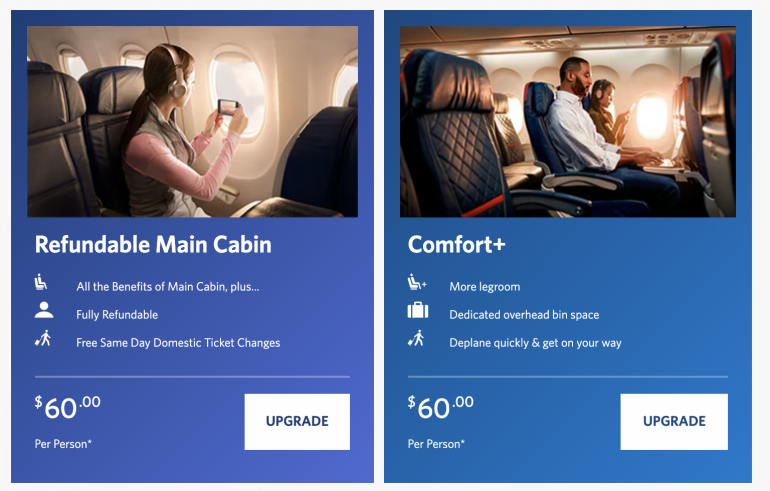
More often, this choice will be baked into the seat selection screen. For example, if you select a Comfort+ (premium economy) seat on Delta, you'll see the cost of upgrading to this seat along with some of the perks.
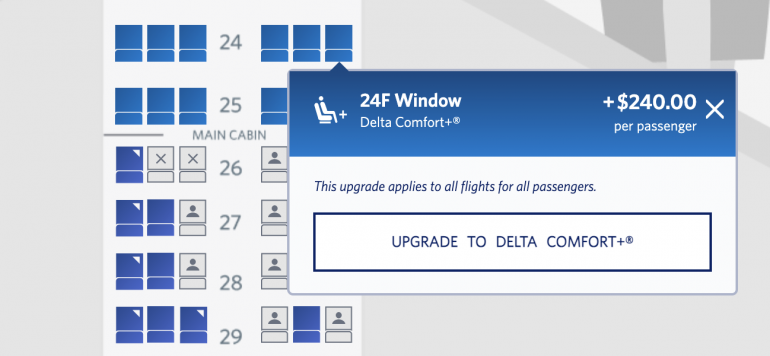
Feeling some decision fatigue yet? Don't worry, here are some simple rules to follow:
- If you are not 100% confident in your plans, upgrade from basic economy to main cabin for better change/cancellation policies.
- If you must have a window or aisle seat, upgrade from basic economy to economy or economy preferred.
- If you must have more legroom, upgrade from main cabin (or main cabin preferred) to premium economy.
- When in doubt, don't upgrade. These fees might seem small, but they can add up in a hurry, especially on round-trip flights.
Keep in mind that airlines have different names for these different upgrade options.
Step 4: Check to make sure your seat selection is OK
Assuming you have selected a seat and not chosen to skip it in step 2, you'll want to make sure it's a decent, comfortable option. This is especially important for long international flights where the difference between a cramped seat by the bathroom and a bulkhead seat with extra legroom can make a huge difference.
Some airlines include information about the seats during the seat selection process, but remember that they are trying to upsell you on an upgrade, so take this with a grain of salt. Instead, consult a third-party website like SeatGuru.
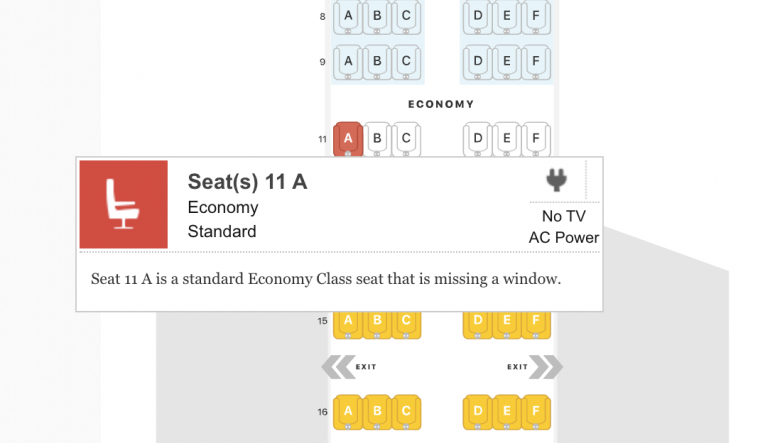
SeatGuru includes detailed information about each seat in most major airlines' fleets. It has a color-coded map that lets you easily spot the best and worst seats onboard.
The easiest way to find your aircraft is to use the search tool on SeatGuru's homepage.

Fair warning: SeatGuru is not the most user-friendly site. It's still so much better than all the competition that it remains the go-to resource for fleet-specific seat info.
Key takeaways
Don't be overwhelmed by the process of learning how to pick flight seats. Airlines have made it that way on purpose in order to sell their more "premium" seating options. Understanding these basics can save you lots of money.
When in doubt, keep it simple. Skip seat selection altogether if the airline is asking you to pay, knowing that you'll still get assigned a seat before takeoff. And don't upgrade your seat unless you absolutely must.
Seating is just one of the ways that airlines have turned purchasing air travel into agamut of add-on fees. Keeping your total cost down requires a bit of know-how and navigation, but is well worth the effort.
More From NerdWallet
The article How to Choose a Seat on a Plane originally appeared on NerdWallet.










